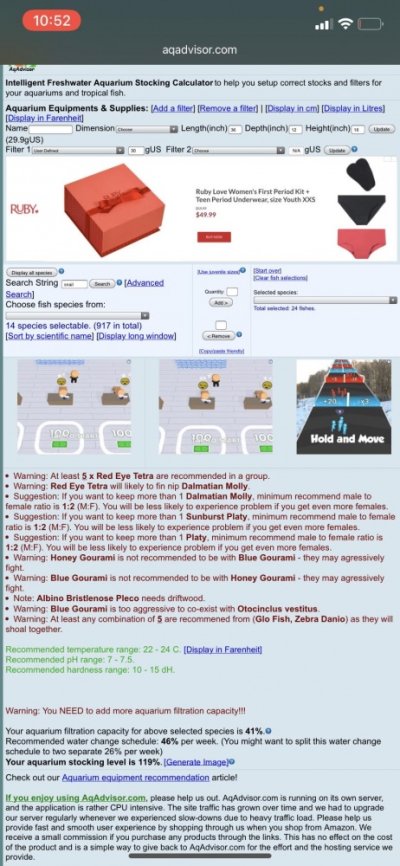AnxiousVentures
Aquarium Advice Apprentice
Hi!
New here.
My ammonia levels have consistently been at about the 3.0 mark on the API test strips and I cannot get it down. I've tried 50% water changes, 30% water changes, and 10% water changes several times in a week. The level stays the same. I have had a few fish die, which is where my concern is.
When I do a water change I treat the water and vacuum the gravel. My tank is 30 gallons and houses
3 red eye tetras
2 Striped Danio
2 Honey Gourami
2 Mickey Mouse Platy
2 Dalmatian Mollies
2 Glofish
2 Sunburst platy
1 Powder Blue Gourami
2 African Dwarf Frogs
2 Snails
1 Dwarf Albino Pleco
4 Ottos
We also have about 7 live plants (no other fake plants).
I feed them a pinch or two daily, and they eat it all. I also feed bloodworms to the frogs, which some of the fish eat as well.
I'm at a loss as to what to do from here - I can't seem to get the Ammonia levels down and it's concerning me. I'd appreciate some advice!
New here.
My ammonia levels have consistently been at about the 3.0 mark on the API test strips and I cannot get it down. I've tried 50% water changes, 30% water changes, and 10% water changes several times in a week. The level stays the same. I have had a few fish die, which is where my concern is.
When I do a water change I treat the water and vacuum the gravel. My tank is 30 gallons and houses
3 red eye tetras
2 Striped Danio
2 Honey Gourami
2 Mickey Mouse Platy
2 Dalmatian Mollies
2 Glofish
2 Sunburst platy
1 Powder Blue Gourami
2 African Dwarf Frogs
2 Snails
1 Dwarf Albino Pleco
4 Ottos
We also have about 7 live plants (no other fake plants).
I feed them a pinch or two daily, and they eat it all. I also feed bloodworms to the frogs, which some of the fish eat as well.
I'm at a loss as to what to do from here - I can't seem to get the Ammonia levels down and it's concerning me. I'd appreciate some advice!

